A splitboarder tired of breaking his poles gives his first impressions of Wolverine Snow Products’ three-piece Split Sticks.
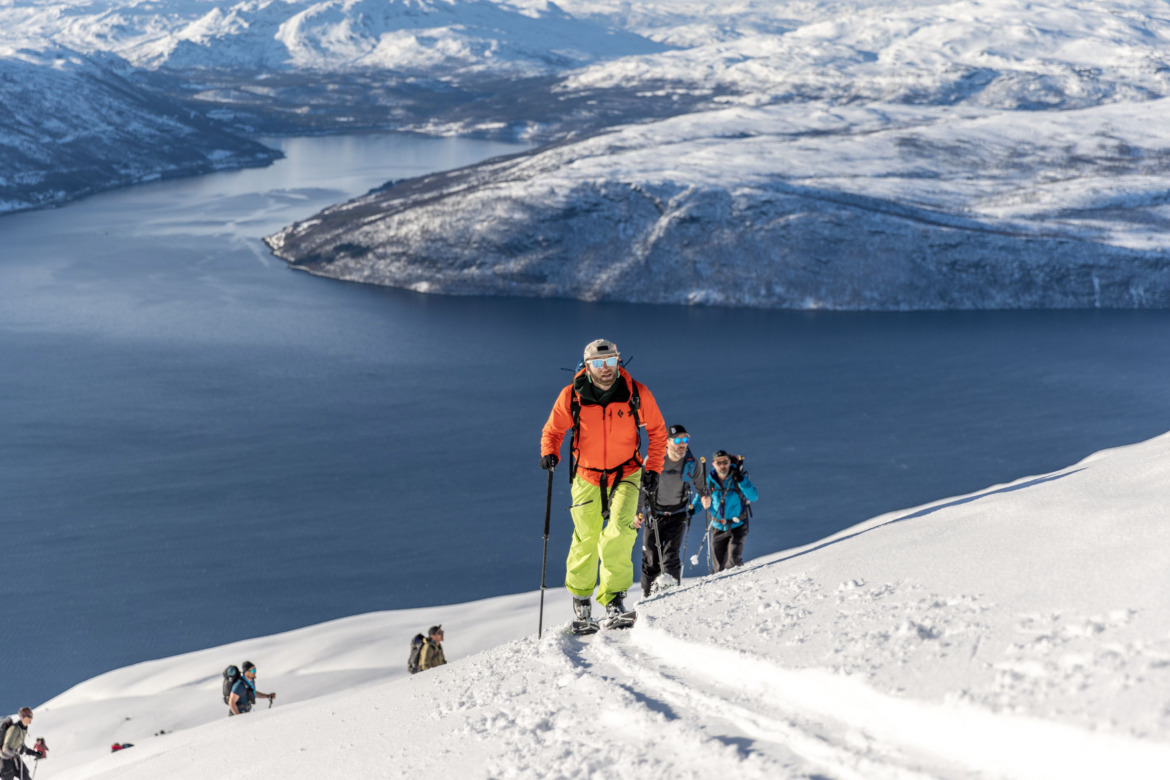
Photo: Marius Rolland for Upguides
Woe is the splitboarder. We’re less efficient backcountry travelers than our two-planking brethren, and, it seems to me, more prone to equipment failure. That said, standing sideways in the backcountry isn’t without its perks. We surf through deep powder and skirt across ACL-gobbling zipper crust with ease—not to mention we look way sicker, bro.
After binding issues, the biggest gear hurdle we splitters face is in the pole department. In particular, collapsible three-piece splitboard poles don’t hold up well to the rigors of life in the skintrack. If I kept all of the splintered three-piece poles I’ve broken over the last decade, I could build a small carbon shrine, upon which I’d sacrifice Angora goats (purveyors of mohair) so the backcountry deities might bless my next set of poles with preternatural durability. But I digress.
When Wolverine Snow Products launched out of Revelstoke a few years ago, I was intrigued. Their pitch was simple: efficient, durable splitboard poles—not collapsible, but telescoping–-designed for splitboarders, by splitboarders. It was a concept I could get behind, particularly since Wolverine is co-owned by Revelstoke’s Joey Vosburgh.
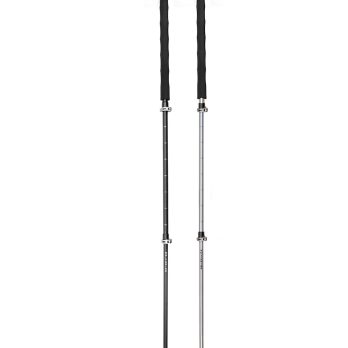
If you’re a diehard splitboarder, Vosburgh’s name should ring a bell. A storied ACMG splitboard guide and early proponent of hardboots, Vosburgh is as legit as they come. In addition to guiding clients at Selkirk Tangiers Heli Skiing, he’s a regular touring partner of skiers like Greg Hill in the big mountain mecca of Revy, which explains his endless quest for more efficient transitions and travel in the mountains. As such, Vosburgh is a vocal proponent of tucking his poles in his backpack or keeping them in his back hand on the descent. Wolverine’s original release in 2021 was a two-piece telescoping pole designed with this method of ultra-efficient travel in mind.
Personally, while I occasionally ride with my poles in hand (especially if I’m shredding with skiers), I’m not as concerned with efficiency as I am jumping off shit. And when I jump off shit, if the mood is right and the hamstrings are limber, I’ll occasionally use my back hand to grab my board. Crazy, I know.
All that to say, while I was curious to try Wolverine’s two-piece poles, I was salivating when the Canadian outfitter announced a three-piece telescoping pole a couple of years back. They seemed like what I’d been unwittingly looking for all of these years. That hypothesis, it turns out, was correct.
I got a pair in time for a three-week splitboard trip to northern Norway last spring that included a mission to the Arctic Splitboard Festival and a ten-day point-to-point expedition through the fjords with Upguides. I’ve also tested them at home in Tahoe, for a total of 25ish days on snow. Below, I’ll explain why these Wolverine three-piece Split Sticks poles ($195-$220) have become my new go-to for big days, international trips, and expedition use.
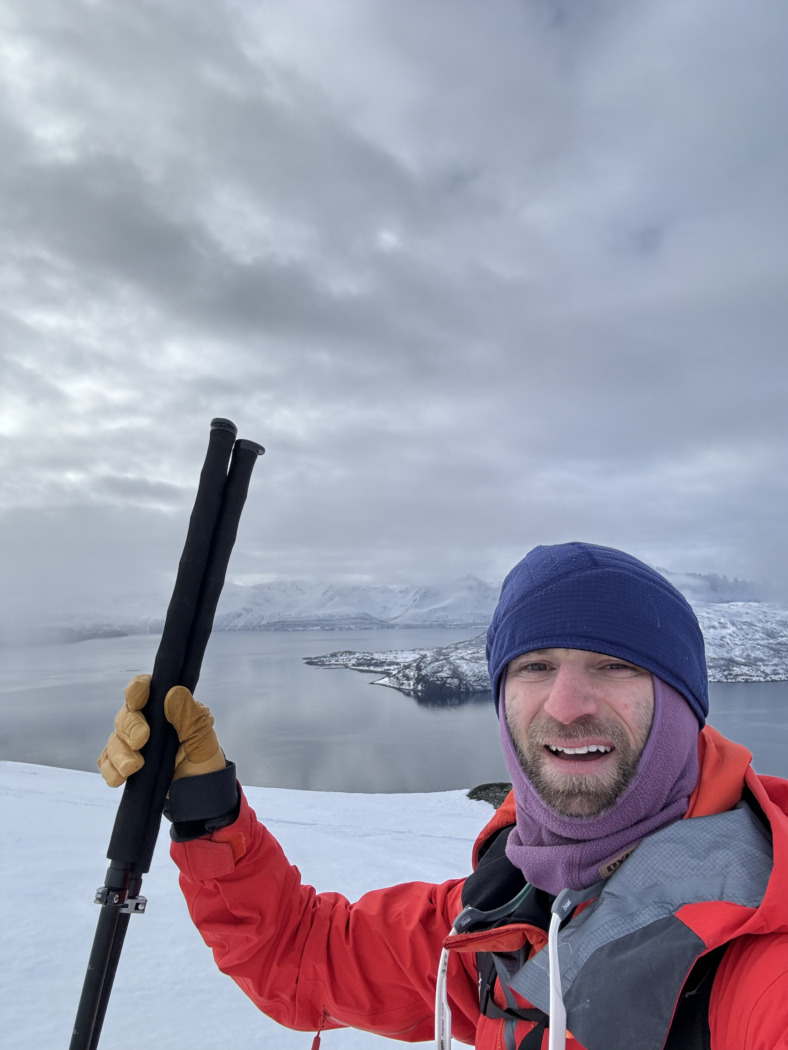
Excellent Grips And Solid Heel Riser Tabs
The first thing that made me fall in love with the Split Sticks was the grip. The three-piece pole measures 24.75 inches at its shortest setting, and the grip is just over 17 inches long, providing a ton of room to adjust your hand positioning while side-hilling or bootpacking. The foam is supple, with ergonomic ridges that accommodate gloved fingers well. Five stars, no notes.
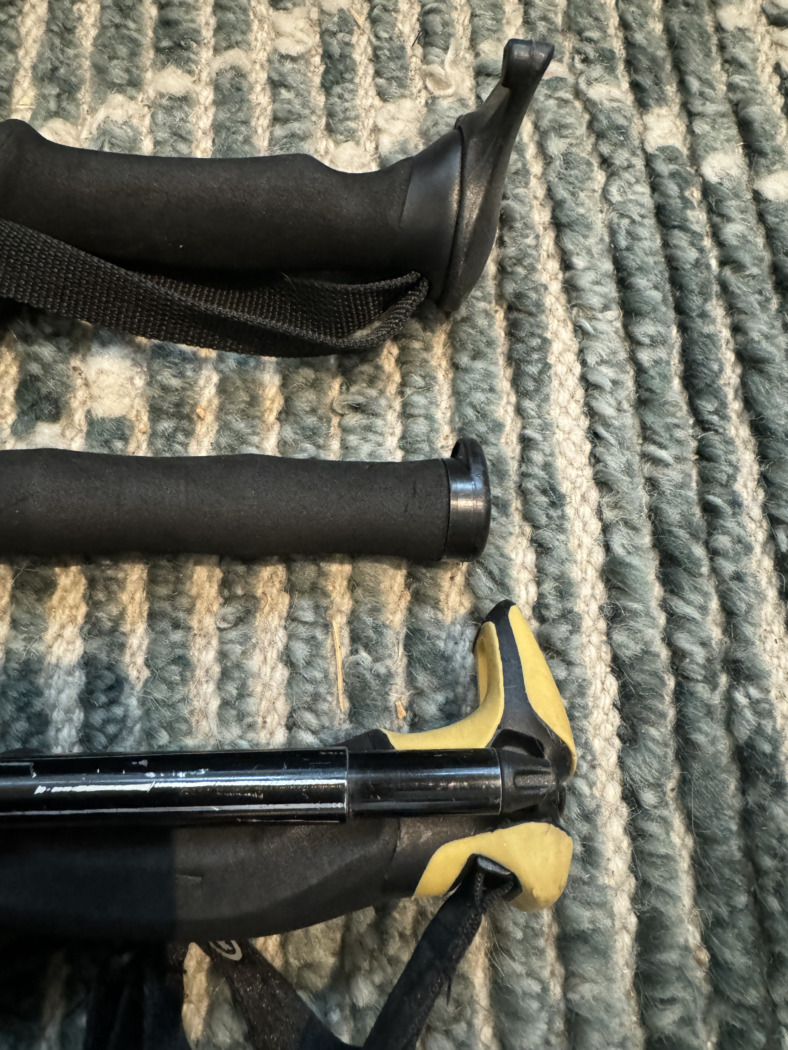
Heel risers on poles. From top down: Voile Camlock, Wolverine Split Sticks, G3 Pivot
The tabs on the top of the poles (used to flick heel risers) are simple and solid. They’re not the best I’ve used (that honor goes to G3’s Pivot poles), but they’re comparatively low-profile and effective. The lip works well to catch and pull the wire of my Spark binding heel risers. My one note here is the flat top of the tabs is slick, which can make pushing the heel riser away from the binding a little harder, especially if your heel risers are sticky. With a modicum of care and lubrication, however, you’ll be sailing smooth.
Stalwart Aluminum Construction
Every backcountry traveler knows the pros and cons of carbon versus aluminum. Carbon is lighter, of course, but it’s more susceptible to breakage. Unsurprisingly, of the poles I’ve broken over the years, 75 percent or more have been carbon.
Wolverine’s Split Sticks are constructed from 7075 aluminum, which balances durability and reasonable weight. When I hold one of the Split Sticks in one hand (reported 550 g per pair), and a carbon competitor like a Black Diamond Carbon Compactor (reported 516g per pair for the 125 cm size), I can notice a slight difference in heft. However, the faith I have that the Wolverine poles will stand up to big days and missions dramatically outweighs that slight difference in weight.
As mentioned, I used these on a 10-day expedition in northern Norway last spring—the kind of trip when a broken pole would be a serious buzzkill—and they crushed everything from touring to bootpacking to lugging a heavy sled along the fjords. They came into contact with my splitboard edges (and splitboard crampons) on techy tracks and never-ending, follow-the-skier sidehills. Aside from a little scratched paint, they’re no worse for wear.
The Wolverine poles also feature beefy aluminum clamps—a common failure point—which I found reliable and easy to operate with gloves on.
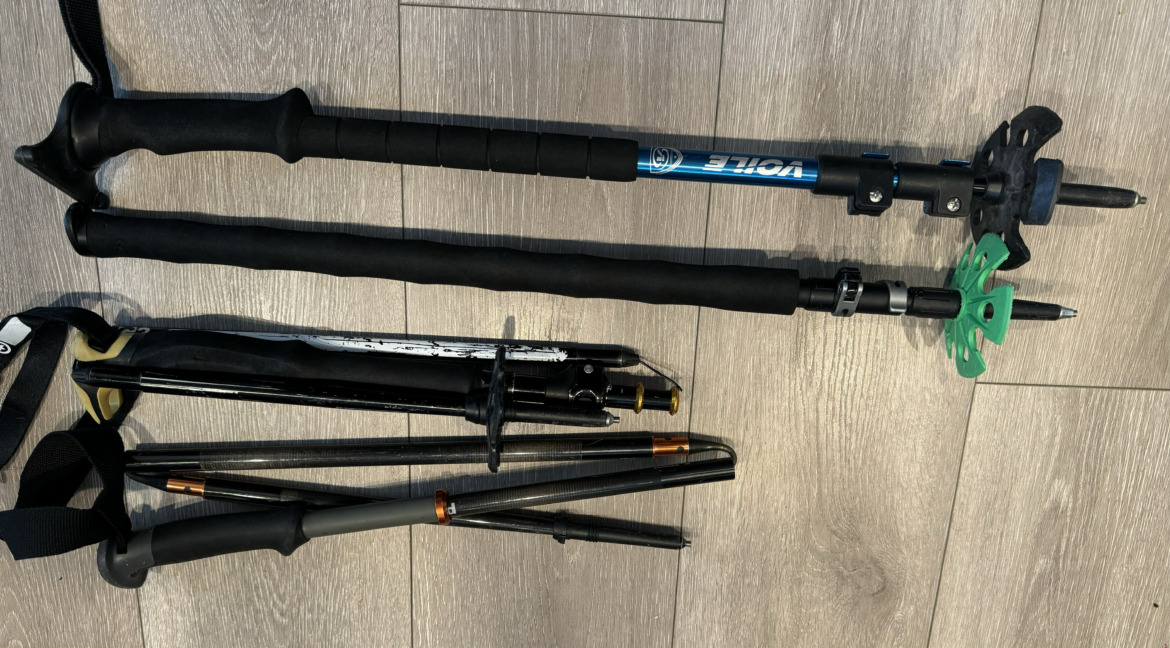
From top down: Voile Camlock, Wolverine Split Sticks, G3 Pivot, BD Carbon Compactor 125
Telescoping Vs. Collapsible Splitboarding Poles
Speaking of clamps, I’d like to take a moment to wax on the pros and cons of a telescoping pole versus a collapsible pole for splitboarders.
Telescoping poles like the Split Sticks feature three cylindrical sections of varying widths. The bottom section nests inside the middle section, which nests inside the upper (grip) section. If you want to, you can yank these pieces apart.
Collapsible poles, on the other hand, don’t rely on a nesting system. The end of each pole section fits into the next, and a cord or cable tethers those pole sections together. They rely on a mechanism–usually an ice-prone, expletive-inducing button–to engage or disengage the tension.
Telescoping poles have fewer moving parts and are more durable in my experience, as they don’t have any cable or button. (The cable that holds collapsible poles together is a common failure point. Think of it like a string that connects a bunch of sausages together, or the union between two halves of a nunchucks—it’s going to take some torque.) Telescoping poles are also generally easier to repair in the field.
However, collapsible poles have one big advantage: they are much more compact and easier to stash inside a backpack.
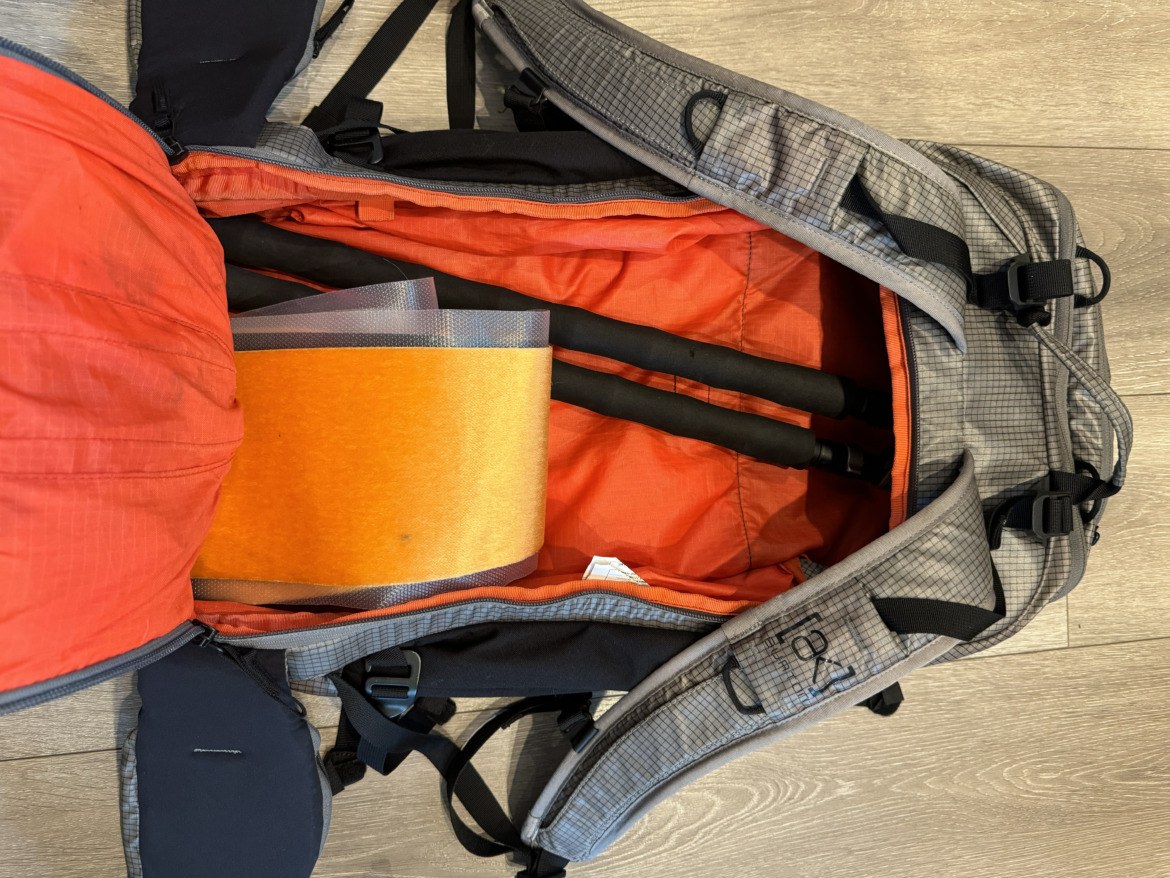
Wolverine Split Sticks ski poles inside Burton Dispatcher pack
Will The Wolverine Split Sticks Stash In Your Backpack?
Earlier, I mentioned how Vosburgh (and guides/uphill crushers of his efficiency ethos) often ride with poles in hand. I occasionally will, too, especially when I’m riding with skiers and want to keep my transitions as tight as possible. But usually, I prefer to put my poles inside my backpack. If that’s not an option, I’ll strap them to the outside of my pack.
When I tested the Split Sticks in Norway, I happened to do so in two extremely different circumstances. I tested them at Upguides’ Arctic Split Fest, which involved splitboard-only crews and a chill, leisurely pace. On the other side of the spectrum, I tagged along on a multi-day expedition with a crew of young Norwegian skiers at the tail-end of a six-month-long avalanche course who were fit and frothing. Being the sole splitter, I was definitely trying to keep my transitions to a minimum.
The Split Sticks were fantastic in both instances, whether I was hustling or touring at a relaxed pace. I was happy to find they’re short enough to be stashed or lashed on the descent (depending on your pack volume). They are definitely not as compact as collapsible poles (see the photo for comparison), but they strap easily to the outside of virtually any backcountry pack and do fit inside certain higher-volume backpacks.
I’ve tested the Split Sticks with four backpacks so far. That includes two airbags (the BCA E2 Float 35 and the Ortovox Tour 40) and two standard backcountry packs (the Burton Dispatcher 35–my favorite non-airbag touring pack–and the lower profile Black Diamond Dawn Patrol 25).
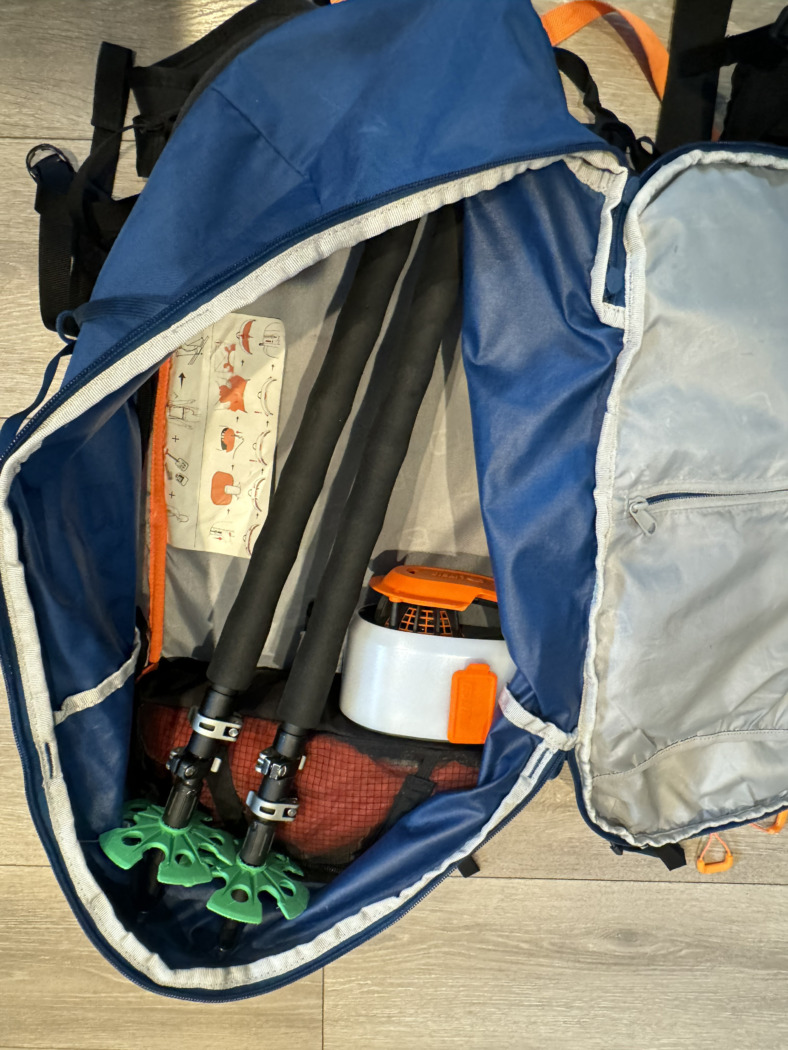
The Split Sticks are a tight fit with the Ortovox Tour airbag pack
The Split Sticks fit inside both airbag packs, so long as I turned them diagonally and didn’t slot the point of one pole in the basket of the other (an option you’ll want to take advantage of when strapping to the outside of your pack). It was a pretty tight fit with the Ortovox, though, so I’d usually strap the Split Sticks to the outside of the pack, unless it was a shorter tour. I used the BCA pack at home in Tahoe, and I noticed the poles would put some pressure on the airbag pocket, causing it to unzip. For that reason, I stuck to securing the poles to the outside of the BCA pack.
My favorite pack-and-pole compatibility was the Burton Dispatcher 35. The Dispatcher has a taller, more slender profile, which works well with the pole length. The poles fit diagonally in the pack, with minimal pressure on the goggle pocket when zipped up. When the Dispatcher was fully loaded, I would sometimes zip the pack around the poles so just the baskets were popping out, which provided solid security (provided no tomahawks were in play) and a low-profile aesthetic.
The Dawn Patrol 25, on the other hand, was laughable. No way—I was not shoving these poles in that minimalistic pack. If you usually do shorter tours and want poles that fit in a 25-liter pack, these aren’t for you. Go collapsible. However, I had no problem strapping them to the pack exterior. Additionally, I’m rarely touring with a 25-liter pack these days, and never traveling with such a small pack. I’d rather have a 35-liter and cinch the compression straps on a lighter tour, but hey, maybe that’s just me.
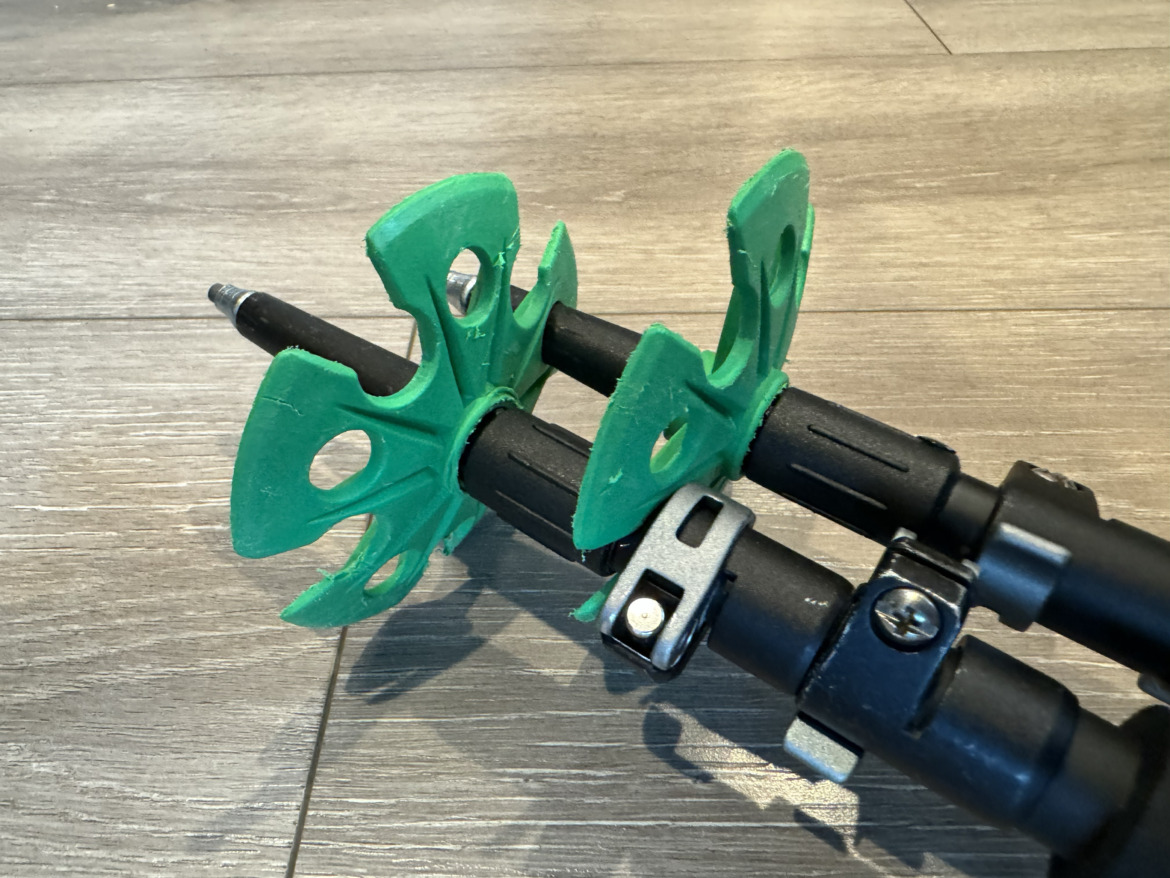
Multiple Basket Options
Another reason to love the Wolverine Split Sticks? A bevy of baskets. They come with your choice of a standard 90-millimeter basket or a beefy 110-millimeter basket that’s ready for a bottomless Japow and BC blower. I was mostly hunting solar snow or early-season powder during my testing, so I’ve only used the 90-millimeter baskets, but I’m stoked to have the option to throw the 110s on. I’ll be in Revelstoke for the Natural Selection Tour this winter, and hopefully, conditions will line up so those XXL baskets are just the ticket. If you like to customize your kit, both basket sizes come in a variety of colors.
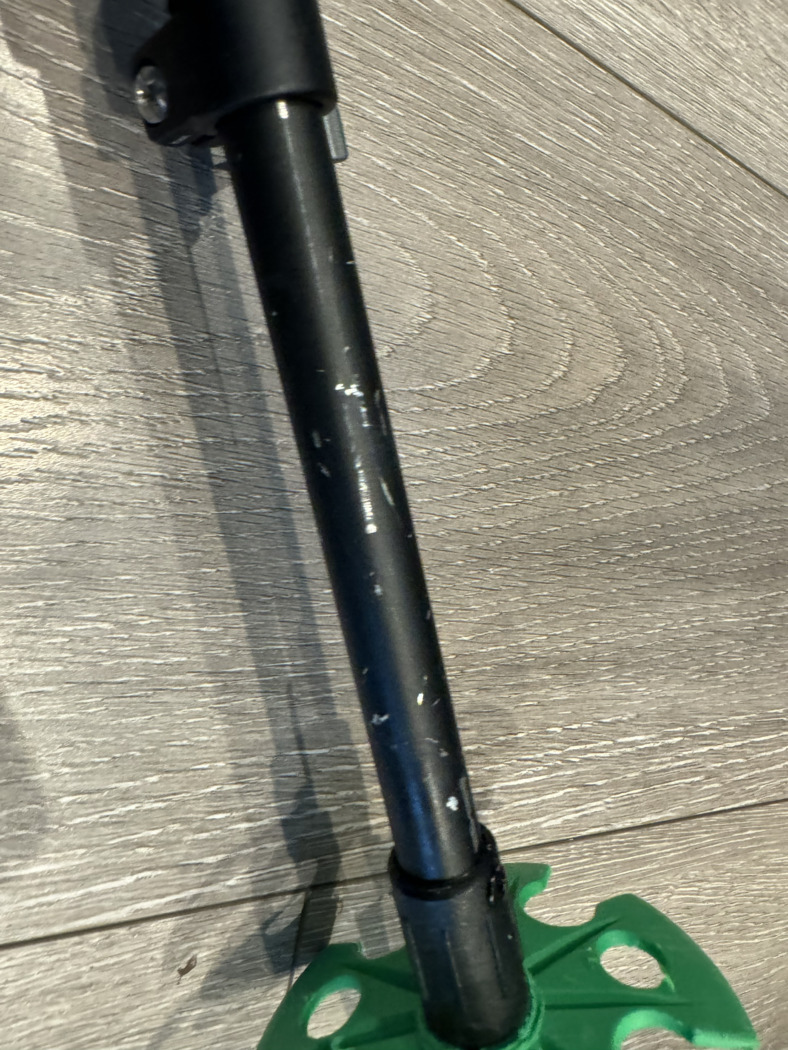
Minor scratches are the extent of the durability issues the author has faced after 25+ days of hard use.
One Caveat on Durability
Throughout this review, I’ve consistently applauded Wolverine’s Split Sticks for their durability. That’s been my personal experience. I’ve been impressed from the jump, and continue to be impressed 25 days in. Zero issues beyond paint scratching on my end, which I could care less about. Granted, 25 days is really only a first impression, so take that in context.
However, I did ask Vosburgh about an infrequent issue, where the adhesive connecting the clamp to the pole fails. I’ve read a couple of comments online that speak to this problem. It isn’t common, apparently, and epoxy can be a quick, effective, and lasting fix in the field.
I’m sharing this here for a number of reasons. First of all, Wild Snow has always been as transparent on gear flaws, and I value that, both as a longtime reader and a more recent addition to the gear review team.
Secondly, as a consumer, I’d rather be aware of potential failure points, and pad my repair kit accordingly. This is especially true if, like me, you take them out as expedition companions. It’s easy to throw a mini packet of epoxy in your repair kit as insurance for the Split Sticks. In fact, it’s a good thing to have in there regardless. It’s not easy repairing splintered carbon or severed collapsible pole cables in the field–trust me on that.
Wolverine is still young. I expect this issue will be sorted sooner than later as they grow and evolve. Still, I highly recommend these poles, here and now.
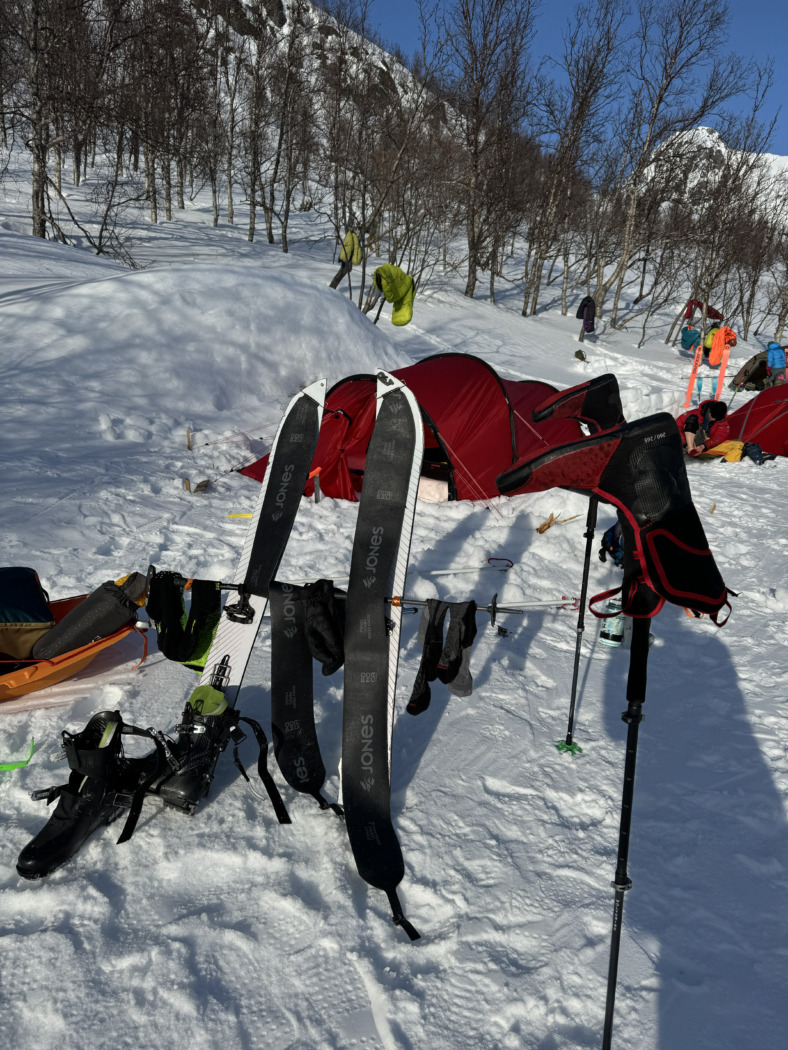
My First Impression Of The Wolverine Split Sticks: A Terrific, Telescopic Pole For The Hard-Charging, Anti-Collapsible Splitboarder
Despite this last disclaimer, Wolverine’s poles are the ones I’ll be reaching for winter camping trips, Arctic expeditions, and big days in big mountains this year. Given my gear nerd-slash-hoarder tendencies, that’s saying something. No, they’re not the lightest or most compact poles on the market, but in my experience, they’re durable, reliable, comfortable, and functional as hell, and I value those things more than a few shaved grams.
Compared to collapsible poles, I have much more faith in these telescoping Wolverines. There’s no ice-prone button (I hate those little silver buttons! Dastardly bastards!), and no delicate cable. A week or two has passed since I started writing this review and, in that window, I’ve broken yet another collapsible pole. Par for the fucking course.
And compared to other telescoping poles I’ve tried, including options from Black Diamond (the Expedition) and Voile (the Camlock–which does have a sick, over-built heel riser tab), Wolverine’s grips are longer, the clamps are aluminum (the BD’s I’ve used were plastic), and they offer a better balance of weight to performance (Voile’s are 70g heavier per pair).
If you’re deadset on keeping your poles in your pack and your go-to pack is under 30 liters, these aren’t for you. But if you have a higher-volume pack, are open to strapping poles to your pack’s exterior, or like to ride with your poles in-hand, these are an incredibly utilitarian option to consider.
While I have you, I’d like to wrap up by saying that Wolverine is good for splitboarding, plain and simple. The more snowboarder-owned and -operated companies—and more people like Joey V shaping the gear we use—the better. I hope, and expect, to see more from Wolverine in the future. Until then, I’ll be pointing at lines and whacking cornices with these trusty Split Sticks.

I’m Drew Zieff. A mountain-loving, powder-chasing, ink-slinging freelance journalist and copywriter. I’ve penned stories for publications such as Outside Magazine, Backcountry Magazine, and Popular Mechanics, among others. Longtime WildSnow reader and now a contributor.
